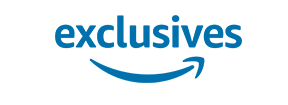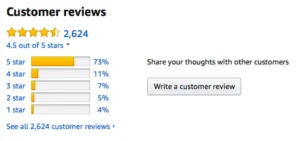Recently I was having a discussion with a new FBA seller regarding his Amazon marketing strategy. The frustration in his voice was clear as he tried to communicate how difficult it is to differentiate products in a crowded marketplace.
As he spoke about his competitors and their vast Amazon advertising advantages, I gently reminded him that all of the market research and software tools available to his competition is also available to him. So why wasn’t he taking advantage?
Expert Amazon Marketing Tips for Putting Your Product on the Path to Success
The reality is that more than any other time in modern history, the marketing playing field has leveled. Because of this, even new Amazon sellers can leverage everything from social media to market research software to source new products and market them to the masses.
In this post, we will explore 5 key techniques for marketing your product on Amazon and how to apply them most efficiently and effectively. Set your product —and yourself— apart from the pack.
But before we begin, keep in mind that the techniques we are about to cover must be used together. No single marketing trick can put your product on the road to long-term success. The combination of Amazon specific advertising, general marketing and old-fashioned persistence is the tried-and-true way to go.
#1. Maximize Exposure Using Amazon PPC and Sponsored Ads
One of the easiest ways to market your product on Amazon is by maximizing your listing’s exposure. Amazon uses a system called Cost Per Click Advertising or CPC. Some people also refer to this as Pay Per Click or PPC. Basically, Amazon places your ad in search results and product pages based on your chosen keyword bid. Anytime your ad is clicked, you are charged.
This is unlike some other forms of online advertising where you pay by impression instead. Facebook utilizes this type of advertising, called PPM, and advertisers pay a specified price for every 1,000 people who see the ad.
PPC marketing campaigns are easy to set up and made to work within your specific marketing budget. Before starting a PPC campaign, you need to research your product’s market in order to establish an estimated budget. This process is vital because certain product’s click prices differ depending on market saturation and competition for high-ranking keywords.
Running a PPC Campaign
There are a variety of tools to help you determine what the cost of an effective PPC campaign might be. As their names suggest, the Viral Launch Product Discovery and Market Intelligence tools both offer valuable insight into your product and your product market. Use these tools to identify high-value keywords to bid on.
Amazon will also recommend a bid price to make the process easier, especially for beginners. Once you have set your bid, Amazon will post your listing’s ad using your selected keyword(s).
Pro tip: Use Viral Launch’s AdSprout PPC Automation tool to set up, manage, and monitor your campaigns.
Where Will My Amazon Advertisement Appear?
Once you have created a PPC campaign, your listing will appear at various places within the SERP (Search Engine Results Page) depending on what type of device you are using or how many products you are promoting.
For example, if you have 3 or more branded products within the catalogue, you have the option of purchasing headline ads. These ads, which appear at the top of the search results page, showcase at least 3 products from your brand.
PPC ads can also appear within the “sponsored products related to this item” section located above the review section of a listing. This is a great way for you to showcase your product alongside competitors while leveraging advantages such as superior photography or price point.

The “related to” section of the SERP is also an effective way for sellers to feature their products alongside more established name brands or best sellers.
Along with headline and related items postings, PPC ads are often featured within banner ads on sites other than Amazon. These offsite advertisements are a hugely effective way of exposing and marketing your listing to customers who may be in the market for similar products.
Though Amazon does not reveal the particulars of their targeting algorithm, it is clear that they use the most advanced techniques in demographics and micro-targeting to get products in front of customers who are most likely and ready to buy.
ProTip: Budget For Success
When considering how to establish your PPC strategy, it is vital that you develop a detailed budget. Managing the balance between your sales volume, margins, and promotional budget is key to developing long-term success without over/under spending.
Carefully review reports and make adjustments as necessary. Understanding the following metrics will also help you get a feel for how you’re doing:
- Impression: The point in which a product is viewed once by a visitor or displayed once on a webpage and found by the number of times the page is located and loaded.
- Click-Through Rate: Commonly abbreviated as CTR, this metric is found by dividing the total number of clicks by its total number of impressions.
- Conversion: The point in which a user purchases a product.
These metrics can help you determine which words can be omitted from future campaigns, what words are generating the most interest, and what is working well and should be left alone.
#2. Consider Enhanced Brand Content
One of the major drawbacks to the Amazon SERP is the overwhelming amount of information and text on the screen. To really catch a customer’s attention, you need standout copy and photography.
Because of this, more and more sellers are turning to the “advanced” material of EBC, or Enhanced Brand Content. Amazon has recently added a slew of new options and easy-to-use templates to its EBC program.
To qualify for this service, sellers must be approved as brand owners through the Amazon brand registry process. Sellers can also qualify for enhanced brand content (EBC) through managed selling programs such as Launchpad or Amazon Exclusives.

Improve the Look of Your Listing with EBC
Once your products have been approved, you can begin to explore the various options and templates available. Regardless of which layout you choose, all Enhanced Brand Content designs allow sellers to expand upon the photos, text, and graphic content within their existing listing.
EBC listings have multiple options for improving your branding content and presenting a more editorial approach to advertising. These options include the ability to include large, graphic photographs with branding staples such as logos and custom fonts. Implementing EBC can help you develop a stronger brand and product presence. There are a ton of EBC examples out there, and many are really well done and making a big difference in differentiating the brand.
Pro Tip: Use Video to Your Advantage
One of the most effective trends emerging in Amazon marketing is the use of demonstration and 360-degree videos. These short 30-60 second video clips are a great way for you to display and feature your product while literally describing its use. The primary advantage of demonstration videos is their ability to add voice-over and visual complexity to your listing. This combination allows sellers to spotlight unique features, display build quality, and show the scale of their products. This can also be used to help explain any product quirks or warnings before those idiosyncrasies lead to bad reviews.
A 360-degree video has the unique feature of being able to expand upon flat detail images while rotating products in order to see all angles, colors, and textures. This simple yet effective technique gives you the ability to show, not tell, and create a deeper connection to the product.
#3. Develop an Email Follow-Up System
A key component to effective Amazon marketing is pinpointing who is buying your products and attempting to forge a long-term relationship with that customer. A common technique for achieving this goal is establishing an email list and developing a system for following up with customers via this connection. Though Amazon does not divulge personal email addresses to sellers, you do have the ability to forward follow-up emails to your customers.
Amazon provides sellers the chance to send customers emails in order to lend feedback or pose additional questions. These emails are an often misused chance for you to reach out directly with buyers while continuing to reinforce your brand message and provide personalized customer service. However, there are 2 key mistakes that sellers often make in their emails.
Mistake #1: Timing
Follow-up emails are more often than not sent too quickly after a purchase. You want to give customers time to experience your product and develop a thorough opinion of the quality and function. Current marketing research indicates that the best time to send your initial follow-up email is between 5-7 days after the customer receives the product.
Mistake #2: Tone
The second mistake sellers often make is the tone of their follow-up email. Many sellers tend to take on a rather desperate or self-deprecating tone in their follow-ups. I’ve read many emails that can take on the air of desperation, often going on and on about how important your review is or how in order to make a living they desperately need your review. This can be very off-putting to customers. Rather than taking on this tone, we recommend to be direct and concise with your email, appealing to a customer’s questions or needs rather than your own.
#4. Manage Your Marketing Workflow
Once you have written a quality follow-up email, managing your customer outreach strategy is key. Even a minor degree of Amazon success brings with it the requirement for some automated system or software to help you manage your marketing workflow. A number of different services exist to assist you with this process. One such service is called Feedback Genius from Seller Labs.
This service allows you to upload multiple emails for your entire catalogue of products. Once emails are uploaded, the software helps you manage your scheduling, delivery and response process. You’ll now have more time to focus on other aspects of your business.
#5. Include a Customized Card Insert
A rather simple but often misused marketing tactic is the inclusion of a customized card insert. Card inserts can be made in all shapes and sizes and take on a variety of different tones or layouts. The fundamental goal of insert cards is to capture a customer’s personal email address in order to continue to market your products. Keep in mind a huge mistake that sellers often make is the attempt to use card inserts as a tool for review mining. This process is now strictly forbidden by Amazon.

In recent months, Amazon has become more and more aggressive in the regulation of this practice. Giveaways or bonus products offered in exchange for a review are strictly prohibited and can lead to the suspension of your account. This being said, card inserts can still be used in a variety of useful ways.
A few key elements to keep in mind when developing your inserts are proper graphic design and clear, easy-to-read text. Sellers often dwell on what they perceive to be ornate or visually stimulating design and neglect the fundamentals of good advertising and communication.
Start Your Amazon Advertising Today
As you can see, Amazon advertising can be a major tool in your e-commerce success. Not only does it allow your product to be seen by more shoppers, but it can also help to improve your organic search rankings so you begin to appear more naturally in searches. This could mean more sales and growth for your Amazon business. That’s the goal, right? Start advertising today and see where it can take you!
And, as always, Viral Launch is here to help you in your Amazon journey. For more tips on Amazon advertising and selling strategies, we encourage you to subscribe to our blog, check out our Youtube channel, and listen to our The Sellers Edge Podcast.








